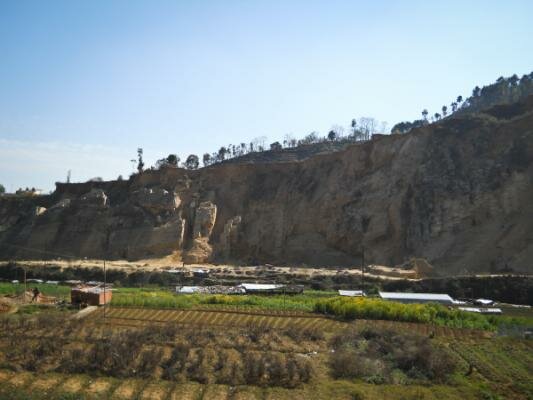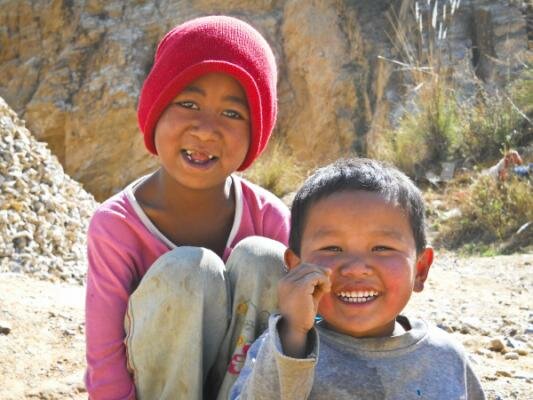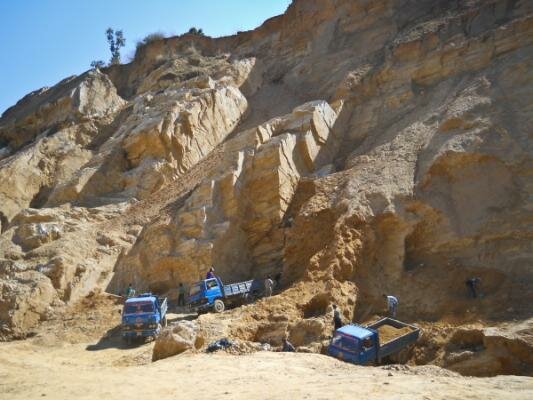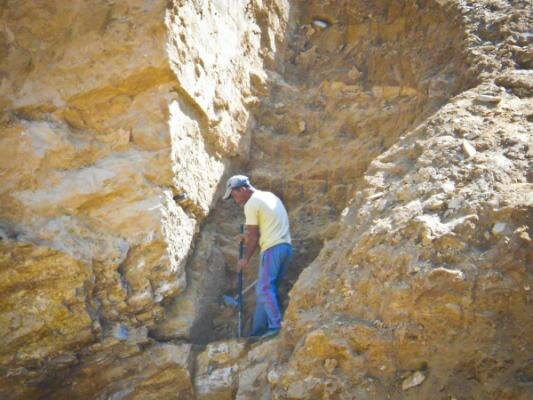Mining Echangu

 1 of 11
1 of 11 
As I approached from a distance, I could hear the sound of stones breaking and see men and women working under the hot sun, and children playing with pebbles. They are wearing old clothes, some of them turned inside out. It seems they have not showered in a long time. Their weathered faces, covered with beads of perspiration, are full of stories. Echangu mine is located just an hour's walk from Swayambhunath Temple, a major tourist attraction. Yet no one sees these men and women toil, and even fewer know their story.
Text and photography by Suman Shakya.
(Left) Suryamaya Magar, who doesn’t know her own age, breaks stones under an umbrella. Her son had worked as a driver, but was injured in an accident and now rests in a hospital. She’s running out of money, and does not want me to ask her too many questions.
Suman is a student from the workshop conducted by theasiamag.com’s Pictures Editor, Debby Ng. The workshop, held in Kathmandu between February and March 2011, is a year-long project that encourages creative and critical thinking through photography. The workshop is a joint project by themasiamag.com, the Little Sisters Fund, Takshashila Academy and the Patatas.

 2 of 11
2 of 11 
When I start taking photographs, everyone gives me their attention, and that makes me a little nervous. I ask if I could take their photos; some ignore me, but some agree. They ask why I am taking their photos. I tell them that I want to make a photo project about this place. They seem not to understand so I explain that I am a student and I have come to study the lifestyle that surrounds this place. Many then pour out their feelings to me. The men are more open to sharing than the women, who don’t have much to say, but quietly come forward to embrace me.
(Left) Men work at a height of about 20 metres. Most of the men and young boys are involved in breaking up the hills, rather than breaking the rocks into smaller stones. They earn more than the women. They work without any protection; they don’t have any insurance, and receive no welfare from the company that employs them.

 3 of 11
3 of 11 
There are about the same number of men and women working in this mine. The work done by men seems to be more challenging than the women’s because they have to scale the hills that can be more than 30 metres in height. If they fall, they will lose their life. I didn’t even spot a first-aid kit in the area, which I thought would be very important in such a working environment. I hear that at least four people have died from falling or from being hit by falling rocks. Women toil under the sun, breaking rocks into smaller chips. Some hide from the sun under a jute bag. Although they have rubber gloves, their faces and eyes are not protected from scattering flints. The work is hard and monotonous.
(Left) Yehme Ghale finds time to play when he’s not helping his father. He loves to eat noodles and drink Coca cola. The five-year-old doesn’t go to school, and spends all day at the mine. His mother ran away from his father, but he does not know the reasons.

 4 of 11
4 of 11 
The workers are aged between 21 and 72 years old, which I find very amazing. Young people are there because they have no education and no job opportunities. The old are there because they have no family members to look after them.
(Left) Tej Bahadur Shrestha is 71 years old, and an unmarried, poor villager of Dolakha Zone. He came to Kathmandu when he was 28 years old and worked as a porter, but when he got older he came to work at the stone mines. To date, he has worked the mines for over 13 years. He arrives by foot, early in the morning, and works till six in the evening. He readily criticises the government and loves to talk about Christianity. Tej is happy to have me listen carefully to him, and asks about my next visit.

 5 of 11
5 of 11 
Though the work is the same, the income is not. An average pay is about NRps 2,500 per month but someone working on the hills earn about NRps 3,500 – 5,000, which seems very low given the risks they have to take to scale the dangerous rocky slopes. This pay is not enough for them to live, even day-by-day. It does not allow them to fulfill their basic needs. Regardless, they must continue to work to risk going hungry.
(Left) A boy plays in a dirty pool created by the rain. These portholes aren’t made by the men breaking the rocks, but are created when huge boulders fall from the hills. The boy doesn’t seem to be able to speak and doesn’t understand anything that I say. It is difficult for me to make conversation. The boys look very happy to be swimming in the pool but I think they are unaware of the dangers of playing in the dirty water.

 6 of 11
6 of 11 
I can’t find a smile on any of their faces; my mood turns sad when I talk to them and when I begin to think about the lives that they are living. I begin to feel a chill in my body.
(Left) Women work under the hard sun without any shade. They refuse to answer my questions because they don’t want their words to be published. They only thing they say is that they want to see their children go school and their husbands to stop drinking.

 7 of 11
7 of 11 
Some of them have no home and have to sleep under the open sky; some live in cold rooms. Most of them are Christians and go to church every Saturday.
(Left) A view of the stone mine. It has a height of about 50 to 60 metres, and about 30 men and women work there. They spend long and arduous hours extracting stones from this mine.

 8 of 11
8 of 11 
When I ask them about what they expect from the government, most answer that they feel no hope towards the government. They add that the Nepali government does not see eye-to-eye with them, that the government has no mouth to speak, no ears to hear, no hands and feet to fulfill the desires of the public.
(Left) Two small children play with stones. They don’t go to the school and their mother is very worried about their future, that it will be “worse than the shape of the stones”. Instead of going school they play with stones all day.

 9 of 11
9 of 11 
Clay is taken by a loader for construction purposes – apart from stones, clay is also extracted from the mines to be sold in the markets for the construction of roads, walls and houses.

 10 of 11
10 of 11 
Suresh Nakarmi is four years old. He lives near a stone mine and his mother works in the mine. He goes to a school near his house. He wants to be a driver and he loves to read Nepali.

 11 of 11
11 of 11 
I would like to wrap up by saying that the reflections in this essay are my own thoughts and feelings about the people, and may not convey their thoughts and feelings accurately.
(Left) Ganga Ghale, father of Yehme Ghale, works at a 30-metre height. I got the chance to talk to him when he came down to buy a cigarette. He wants his son to go to school but due to his debts, he has not had the chance to put his son in school, but is adamant that he will do so soon.











